Inbox and Environment News: Issue 315
June 4 - 10, 2017: Issue 315
What's That Smell? - Is It A Gasfield, A Party For Coal Chiefs At Parliament House - Or More CORRUPTION??!
In what is now a familiar pattern for the state government, elected by the people to represent the people, anytime a community overwhelmingly states they do not want an environment wrecking, rural industry destroying gas or coal mine or power station in their community, the government immediately rejects their 'No' and announces forums and community consultation will begin straight after the community REJECTS the proposal.
Last week the NSW Premier announced measures to be taken against those who work for the coal blighters and against the people resulting in theParliamentary Contributory Superannuation Amendment (Criminal Charges and Convictions) Act 2017 No 18 — Assented to 01 June 2017.
Rural communities are being patronised everytime their opposition to the push to ruin our land is rejected. In rape cases 'no means no' - why is that different in any other forum? No means NO - it doesn't mean 'maybe' - ever.Just because there are less people on the land than in cities, doesn't mean there is less validity to their stance - when 90-99% of a community reject such destruction for profit their 'no' should be respected.It is time for all politicians to ditch serving lobbyists first and those who they're meant to represent last or stand down - immediately!
Readers won't have too much trouble reading between the lines on this latest discussion - :
Australians Against AGL Dalton Power Project
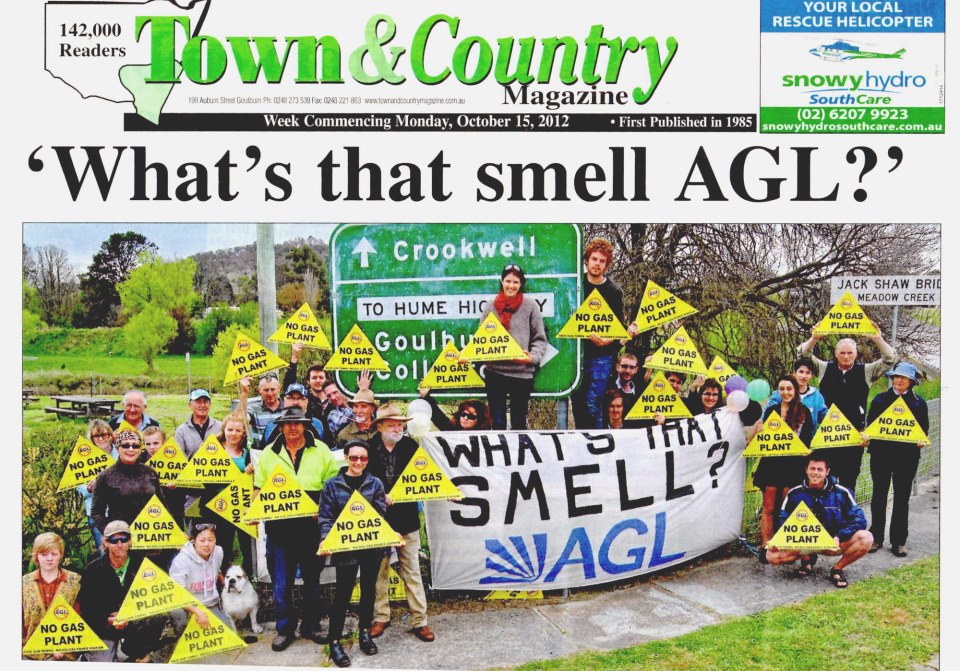
We are committed to protecting the environment in which we live from the greed and corruption of energy company AGL.
AGL wish to destroy our communities, land, environment and future with the construction of Australia’s largest gas-fired power station in Dalton, NSW.
Our campaign to put a stop to this unnecessary corporate profiteering and environmental vandalism is of local and national concern.
It is time dirty energy companies were made accountable for their complete disregard for the environment, our communities and the destruction of our collective goal toward a renewable future.
The FACTSThe plant’s first stage will be 750 MW of gas-fired power generation, expanding to 1000 MW in Phase 2.
The Dalton plant will be the largest gas-fired plant in Australia, with the next closest being Colongra at 667 MW, Uranquinty at 641 MW and Darling Downs at 630 MW.
In comparison, Australian base-load coal-fired power plants range from 107 MW (Worsley Alumina Power Station, WA) to 2880 MW (Eraring, NSW) with the average being approximately 1300 MW .
The plant is a peaking power plant, operating when wholesale prices are high.
Peaking gas-fired power plants still produce approximately 85% of the greenhouse gas emissions of coal-fired power plants.
Other by-products of this plant include oxides of nitrogen, sulfur dioxide, formaldehyde, acrolein, benzene, ethylbenzene, toluene, xylene, napthalene and polycyclic aromatic hydrocarbons.
AGL submitted and had approved in 2012 an application under the disgraced and repealed Part3A NSW planning laws.
AGL are now seeking to extend the time for the proposal by 2 years under the transitional arrangements of the same repealed law.
AGL was convicted and fined for not disclosing political donations in relation to planning submissions, including the Dalton proposal.
Dalton has been assessed as a high hazard earthquake zone, with three earthquakes registering about 5.5 on the Richter scale in November 1886, November 1934 and March 1949.
Please sign our petition against AGLs Dalton Gas Fired Power Station. Help us STOP this Environmental Vandalism. Thank you for your support.
Australians Against AGL Dalton Power Project

Community Consultative Committee To Be Established For Dalton Power Station
31.05.2017: Departmental Media Release- Department of Planning and EnvironmentA Community Consultative Committee (CCC) for the Dalton Power Station will be established to create a forum for community representatives and the company to share information and feedback.
Mike Young, Director of Resource Assessments, said the Department has asked AGL to establish the CCC and has appointed an independent chairperson.
“While the project is not yet operational, we noticed there was a high-level of community interest in the recent exhibition of a modification application for the project,” Mr Young said.
“There were over 400 submissions during the extended public exhibition period and we recognise the community wants more information.“AGL’s modification application to extend the lapse date for the approval of the Dalton Power Station must still undergo planning assessment and has not been determined.”
Mr Young added the Department has appointed Ms Kathy Jones, an independent community relations expert, as chairperson of the CCC.“Under recently updated CCC guidelines, the Department – rather than the proponent – is responsible for appointing chairpersons and can confirm Ms Jones will undertake the role,” Mr Young said.
“The next step under the guidelines requires AGL to advertise for membership in local newspapers. Applications for membership will then be considered by the independent chairperson who will then make recommendations to the Department for decision.
“We have asked AGL to establish the Dalton Power Station CCC as soon as possible so that the committee is operating before any decision is made on the current application.”
All submissions received during the recent public exhibition have been sent to AGL for consideration. The company must now provide a formal Response to Submissions to the Department, which will be publicly available online.
More information on CCCs can be found on the Department’s website www.planning.nsw.gov.au/CommunityConsultativeCommittees
Hundreds Of Submissions Received For Dalton Power Project
21.04.2017: Departmental Media Release - Department of Planning and EnvironmentFour hundred submissions on the extension of the Dalton Power Project have been received by the Department of Planning and Environment following broad consultation with the community and industry.
The Department’s Executive Director for Resource Assessments, David Kitto, thanked the community for providing vital feedback which is considered in the assessment of the application.
“We really appreciate the strong community response – we received 400 public submissions for the Dalton Power Project extension,” Mr Kitto said.
“Community consultation is an important part of the planning process and we read every submission sent to us as part of our assessment. People have a right to give feedback on any application that has the potential to impact their community.”
AGL is seeking a two-year extension to the lapse date of its approval for the Dalton Power Project, located in NSW’s Southern Tablelands, from July 2017 to July 2019. The application for extension went on public exhibition for four weeks and closed on 13 April.
This application makes no changes to the approved Dalton Power Project.
“The project approval allows for the construction and operation of a 1000 megawatt gas-fired power station near Dalton. It would operate to supply electricity at short notice during periods of peak demand,” he said.
“This application was to extend the start date to the project by two years.”
“Of the public submissions received, 396 objected to the proposed extension of the lapse date, two supported it and two comments were also received.
“The community raised a number of issues in regards to the proposed extension, including a lack of community consultation by AGL, the need for a new environmental assessment, the effect on local farms, ongoing uncertainty, and economic impacts to the community which have changed since the project was approved in 2012.”
A majority of the submissions came from people located more than 50 kilometres away from Dalton, however about three-quarters of the Dalton community provided submissions. AGL will now be required by the Department to respond to the issues raised in submissions by providing a formal Response to Submissions (RtS).
The Department will then assess the merits of the modification application, all public submissions and the RtS.“Once the Department finalises its assessment, including consideration of public submissions, we will forward the application to the independent Planning Assessment Commission for a final decision,” Mr Kitto said.
To view the public submissions, visit majorprojects.nsw.gov.au (correct webpage for Dalton Power Project MOD 1)__________________________________
Public feedback Submissions - 2 were Comments - 3 Support - the rest OBJECTS to the proposal
AGL Fined $124,000 In Land And Environment Court
12.01.2017: Departmental Media Release-Department of Planning and EnvironmentAGL Energy and its subsidiary AGL Upstream have been fined a total of $124,000 in the Land and Environment Court today for failing to disclose political donations when making planning applications.
The judgment is a result of a prosecution brought by the Department of Planning and Environment after a compliance investigation was undertaken following complaints from community groups.
This is the largest total penalty imposed since the provisions were introduced in 2008.
AGL Energy was fined $112,000 and AGL Upstream $12,000.
In addition to the fine, the companies have been ordered to pay the Department’s legal costs. Related story: Department takes court action on AGLs political donation disclosures AGL Energy pleaded guilty to 10 charges and AGL Upstream pleaded guilty to one offence of failure to disclose political donations under section 147 of the Environmental Planning and Assessment Act 1979.
The charges related to AGL’s coal seam gas projects in Gloucester and Camden; the Newcastle Gas Storage Facility; the Broken Hill solar plant and the Dalton Power Station.
General Counsel for the Department of Planning and Environment James Hebron said the company cooperated with the Department’s compliance investigation.
“Under planning legislation there is an obligation on a proponent when making a planning application to report political donations” Mr Hebron said.
“This is to ensure transparency in the planning process.”
NPWS Teams Up With Landcare And GreenArmy For Wetland Tree Planting
Media release: 31 May 2017: Office of Environment and HeritageNew homes for birds and fish are being created as the Iluka GreenArmy and Landcare help the National Parks and Wildlife Service (NPWS) replant tree cover in Everlasting Swamp National Park at Lawrence.
NPWS Project Officer Dean Egan said restoring tree cover will create homes for birds, provide shade and structure for fish and assist in improving water quality in the Park.
"More than 140 trees were planted in recent weeks, adding to the over 1200 trees planted in since start of 2016," said Mr Egan.
"A big thanks to the dedicated team of ten GreenArmy crew and five Iluka Landcare volunteers.
"The Sandon to Wooli Community Nursery and Iluka Landcare have worked with NPWS to source local seed, raise young trees and the Envite-led Iluka GreenArmy has been planting the trees," Mr Egan said.
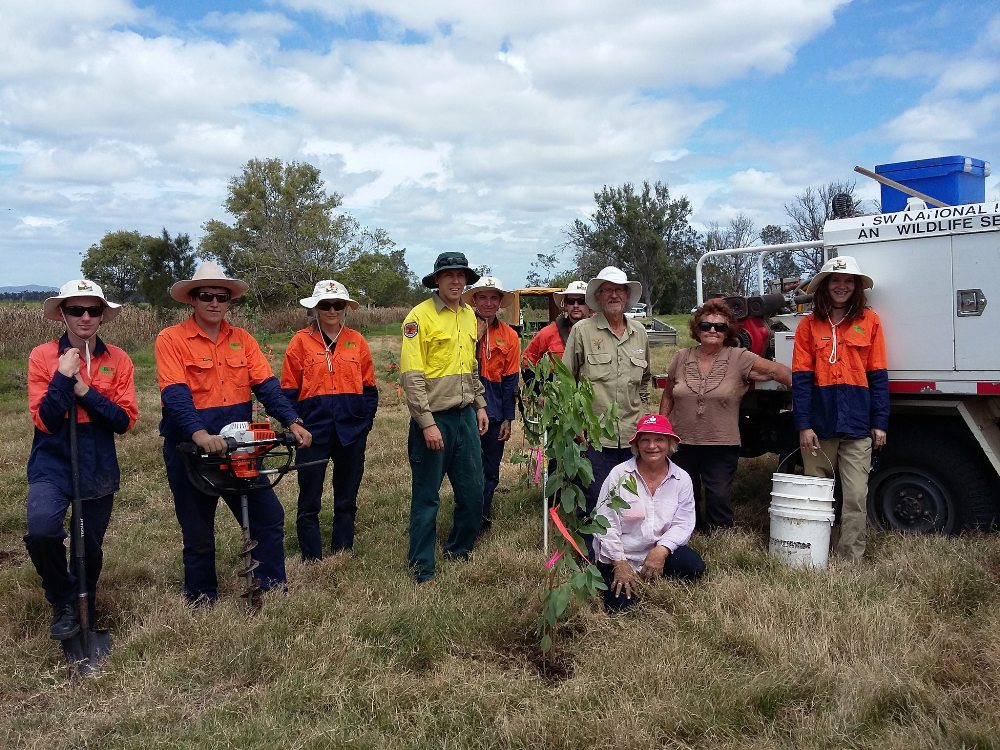
Everlasting Swamp Tree Planting - NPWS with Iluka Greenarmy and Landcare March 2017
Envite GreenArmy Coordinator Mick Webb said it is great to see this improved wetland health achieved through this community partnership of both young and old.
"The incredible birdlife, fish and rare wetland vegetation needed a bit of a hand up.
"Parts of the new Park were devoid of creek-bank trees, with older trees being hit hard by dieback and lack of habitat," Mr Webb said.
Mr Egan said since the Park was established in November 2014, NPWS has looked at ways to improve the wetland.
"We teamed up the Southern Cross University in 2015 to look at this issue, now we are seeing this project growing on the ground," Mr Egan said.
"The GreenArmy project is funded by the Australian Federal Government and the wetland restoration is funded by a NSW Environmental Trust grant.
"Everlasting Swamp National Park lies near Maclean, NSW and is known as the 'Kakadu of the South' to local birdwatchers.
"We welcome visitors to check out the park, the wetland is now filled and is teeming with life after the recent flooding rains," Mr Egan said.
For information on visiting Everlasting Swamp National Park visit hereEverlasting Swamp National Park was created in November 2014. It covers an area of 1769ha. Everlasting Swamp is named for the large number of waterfowl living in the backswamp next to the Clarence River. The reserve protects species including brolga and jabiru, along with a rare coastal wetland floodplain ecosystem.
Activities: From the park entrance, paddle 3km upstream along Sportsmans Creek towards the heart of the wetland system to search for birdlife. If you visit during spring, you may be lucky enough to see a brolga mating dance. There are grassy areas to stop for a picnic under the old red gums, but there’s no drinking water so it’s a good idea to bring some with you when you visit.
Access: The 2WD dirt main entrance road continues off Weir Road, 20km northeast of Grafton, just west of the town of Lawrence. As you reach the end of the sealed road, drive past four unlocked gates and follow the creek edge to the park entrance.

Juvenile Osprey Lives Another Day
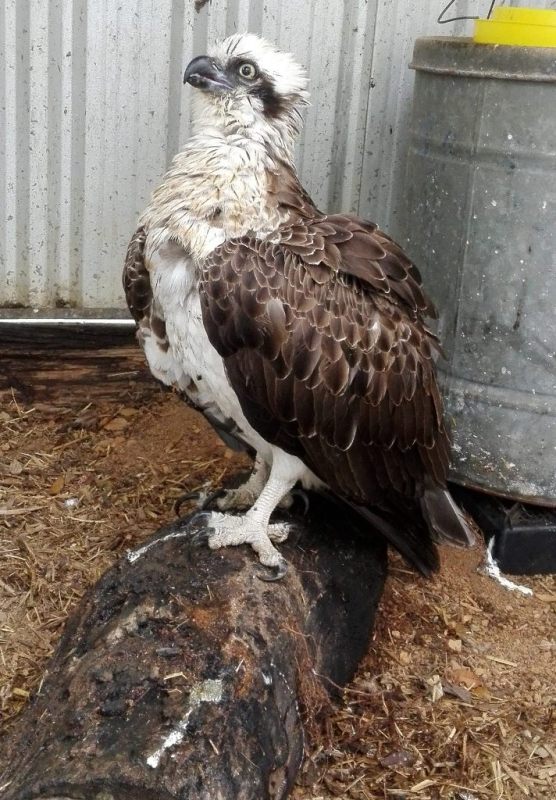 Media release: 2 June 2017The National Parks and Wildlife Service (NPWS) has praised the efforts of local wildlife rescue group FAWNA for successfully rehabilitating a juvenile Osprey found injured near the Hastings River.
Media release: 2 June 2017The National Parks and Wildlife Service (NPWS) has praised the efforts of local wildlife rescue group FAWNA for successfully rehabilitating a juvenile Osprey found injured near the Hastings River.
NPWS Senior Conservation expert, Peter Stathis said the young Osprey was released back into the wild yesterday after 15 days of rehabilitation with FAWNA wildlife carers - marking a great outcome for the bird and her species.
"Osprey are a magnificent apex predator with a wingspan of up to 1.7 metres but are listed as vulnerable in NSW,” Mr Stathis said.
“The rehabilitation of this bird is a specialised task that requires considerable knowledge and patience so we are delighted with such a fantastic result,” he said.
FAWNA Carer, Meredith Ryan said the Osprey flew away on release so quickly and strongly they couldn't even get good photos.
“She just took off out towards the river and back to her home grounds,” Meredith said.
“It really is an incredibly rewarding outcome especially given it took 12 days before she would adequately self-feed, we were not completely confident of a full recovery at first.
“The recovery process was relatively short once the bird began feeding,” she said.
Port Macquarie Veterinary Hospital assessed the bird initially and could not determine what caused the bird’s injuries given no fractures were detected on X-ray.
FAWNA carers, with the Lendlease Environment Co-ordinator Clive Wightwick who originally found the bird, released the Osprey on Wednesday afternoon near the Hastings River and only a short flight to her encounter location.
NPWS’s Mr Stathis said the work of the FAWNA volunteers is essential to achieving positive outcomes for a wide range of native animals.
“They do a fabulous and difficult job, which is not well understood and are often at the front line when it comes to animal rescue,” Mr Stathis said.
“Amazingly, they are also all volunteers who have to deal with some pretty difficult and confronting situations to return injured wildlife back to nature and when they can’t, their role in ensuring humane outcomes for suffering wildlife is vital.
“This Osprey release is just one of their many great outcomes for our treasured wildlife,” Mr Stathis said.
For more information visit the Eastern Osprey profile page.
If you find sick or injured wildlife in the Mid North Coast region, please call the FAWNA Rescue Line 6581 4141 or your local NPWS office.
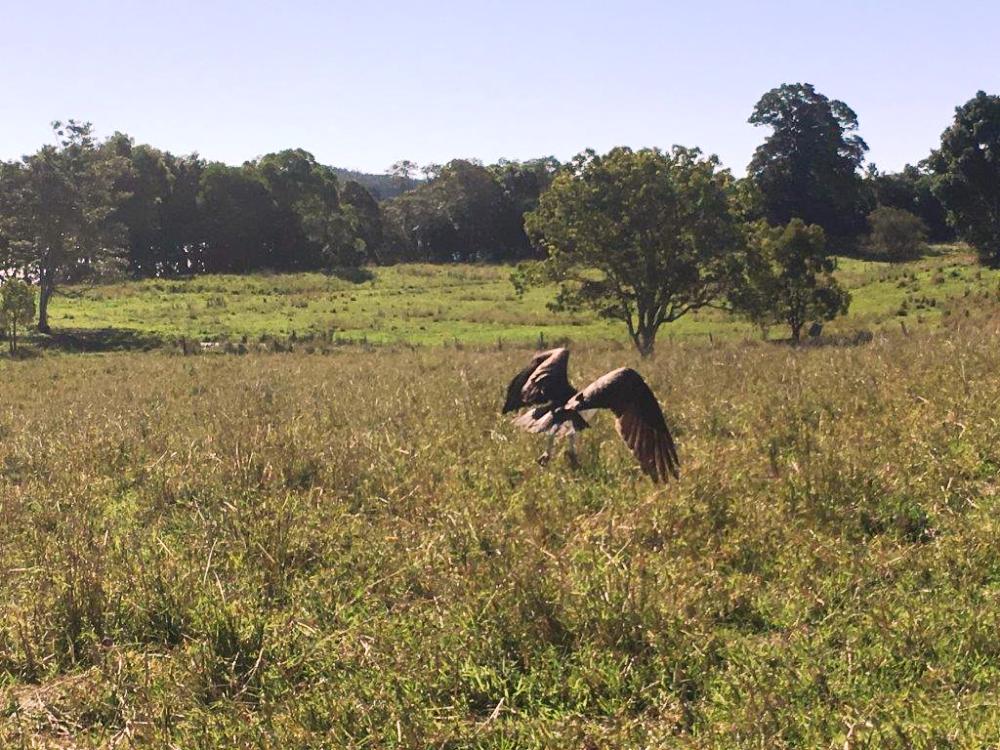
Photos courtesy OE&H
 Media release: 2 June 2017
Media release: 2 June 2017
Fixing Weeds At Jones Beach
Media release: 1 June 2017Threatened species including beach stone curlew, southern swamp orchid and themeda grassland are all benefitting from a conservation project south of the Wooli River in Yuraygir National Park.
NSW National Parks and Wildlife Service (NPWS) area manager, Andrew Lugg, said for the past 12 months staff and contractors have been working hard to protect Jones Beach on this beautiful section of coastline.
"The project site is a remote five kilometre section between Wooli and Pebbly Beach containing threatened species such as nickerbean, sand spurge, and the threatened ecological communities themeda grassland and swamp sclerophyll forest," Mr Lugg said.
"The project had its challenges with the June 2016 east coast low and major storm in July impacting on the site and extreme hot weather over summer followed by ex-Cyclone Debbie a few months ago all delaying planned work.
"Nevertheless, contractors Bushland Restoration Services have completed primary work and a follow up over all the 10 hectares site reducing weeds to insignificant levels.
"Last year local staff were successful in obtaining funding from the NPWS Find it and Fix it program to undertake bush regeneration and weed work.
"The Find it and Fix it program is aimed at undertaking conservation projects where significant results can be gained within the 12 month timeframe of the project.
"With weeds now reduced to low levels it will be much easier to conduct essential follow up work and continue the NSW Government's work in protecting our precious natural heritage," Mr Lugg said.
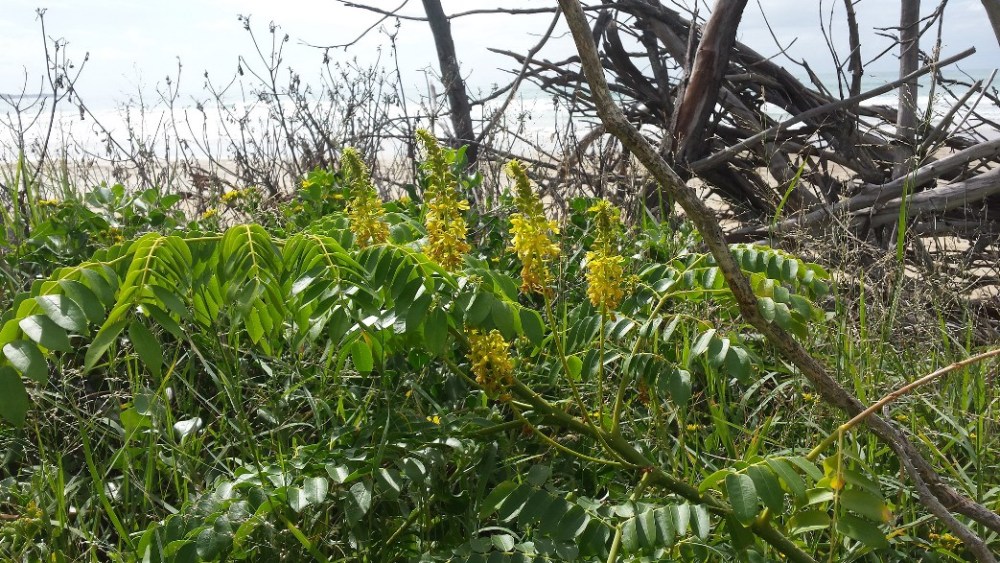
Nickerbean, a threatened species has benefited from this project - photo by NPWS Pest Officer Jeff Thomas.
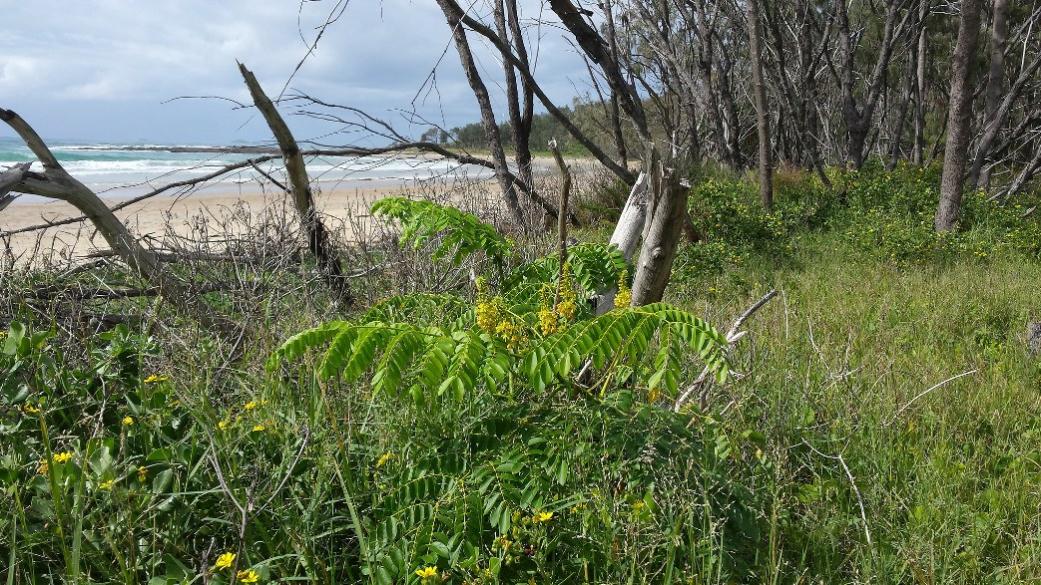 Nickerbean, a threatened species has benefited from this project at Jones Beach - photo by NPWS Pest Officer Jeff Thomas.
Nickerbean, a threatened species has benefited from this project at Jones Beach - photo by NPWS Pest Officer Jeff Thomas.


CSG Methane Pollution “Significant” At QLD Workover Site: CSIRO Report Reveals
June 01, 2017: Media Release - Lock the GateThe Lock the Gate Alliance has welcomed a new CSIRO report that has produced findings highlighting far more research is required to measure the methane emissions from the unconventional gas extraction process.
Naomi Hogan from the Lock the Gate Alliance said, "This CSIRO study reveals that the single CSG workover they measured caused, "more than 21 tonnes of methane" a "substantial release of gas" to be "vented into the atmosphere".
“Just 24 hours at that one workover rig at one well released the equivalent of 525 tonnes of CO2. This is a fairly alarming rate of methane venting, considering it may not be properly accounted for by the Government currently.
“There are thousands of CSG workovers occurring in QLD, it’s an ongoing procedure that can range from replacing well tubing or pumps, or resetting a well due to changing flow conditions.
“The bottom line is there could be tens of thousands of tonnes of raw menthane being vented into the atmosphere from unconventional gasfields in Australia that have not been properly accounted for.
“This "substantial release" of gas at the one workover site reveals there is a large body of research yet to complete on measuring the true methane emissions from unconventional gasfields in Australia.
"This study did not examine the emissions from drilling, hydraulic fracturing and the liquid flowback period, yet the report admits these practises: "have been identified as one of the main emission routes from unconventional gas production in the United States".
"Top down satellite measurements of unconventional gasfields in the United States show methane emissions to be 5%-17% of total gas production - a dangerously high methane figure that should be investigated fully in Australia.
“Farmers’ on-ground experience in QLD also shows that the high point vents across coal seam gas projects are a huge source of unregulated emissions that warrant further investigation by the CSIRO.
"This study confirms that far greater work is required to measure methane emissions from unconventional gas sites in Australia, and highlights the importance of baseline studies before a decision is made on projects like the proposed Narrabri gasfield in north-west NSW,” she said.
The CSIRO report, Methane Emissions from CSG Well Completion Activities - Report for the Department of the Environment and EnergyStuart Day, Paul Marvig, Stephen White, Brendan Halliburton - May 2017, is available here
Clean Energy Finance Corporation To Be Allowed To Invest In Carbon Capture And Storage Technologies
30 May 2017: Media release - The Hon. Josh Frydenberg MP, Minister for the Environment and Energy
The Turnbull Government will remove a legislative prohibition on the Clean Energy Finance Corporation (CEFC) to allow it to support investment in carbon capture and storage (CCS) technologies which can reduce emissions by up to 90 per cent.
Access to finance is one of the barriers to investment in CCS and a change to CEFC legislation will provide a significant signal of support and reduce risk for potential investors.
This is the latest demonstration of the Government’s commitment to a technology neutral, non-ideological, approach to national energy policy. Removing the prohibition will allow the CEFC to support a wider range of low emissions technologies and thereby reduce emissions at lowest cost.
CCS technology has been acclaimed by the Intergovernmental Panel on Climate Change (IPCC) and the International Energy Agency (IEA) as critical to enabling the world to meet its emission reduction targets.
CCS is a proven technology being deployed globally with 17 large-scale commercial CCS facilities already in operation storing around 30 million tonnes per annum of carbon dioxide. In Australia, the Gorgon LNG project in Western Australia will soon become one of the world’s largest CCS projects when it begins sequestering up to 4 million tonnes per annum in carbon dioxide in the coming year.
There are also significant opportunities for the application of CCS technologies outside of the energy sector. The International Energy Agency has stated that CCS is the only option available to significantly reduce emissions from some major industrial processes, such as iron and steel production, cement production, and natural gas processing.
The CEFC’s ability to invest in CCS technologies will complement other low emissions investment by the Federal Government including more than $3 billion worth of wind, solar and storage projects.
Legislation will be introduced into Parliament on Wednesday 31 May 2017.
Statement From The CEFC Regarding Proposed Changes To The Clean Energy Finance Corporation Act
30 May 2017The Clean Energy Finance Corporation notes the statement today from the Hon Josh Frydenberg, Minister for the Environment and Energy, regarding proposed changes to the CEFC Act to remove the prohibition on the CEFC investing in carbon capture and storage (CCS) technologies.
Amendments to the CEFC Act are a matter for the Parliament. As a government agency, the CEFC has always complied with the Act, and will continue to do so.
The CEFC is committed to transforming clean energy investment to lower Australia's carbon emissions. Under the CEFC Act, our investments include renewable energy, energy efficiency and low emissions technologies. To date, we have invested more than $3.3 billion in eligible clean energy projects, with a total project value of $8.3 billion, while also delivering a positive return for the taxpayer.
In addition to potential applications in the power sector, CCS can also be used in the industrial sector to capture emissions from chemical processes, as well as fugitive emissions. There are some industrial processes for which there are currently very few alternatives to reducing emissions, making CCS an important technology if these sectors are to achieve deep cuts in emissions.
The majority of existing large-scale CCS projects globally are in the industrial sector, including in natural gas, fertiliser, hydrogen, and iron and steel making. In Australia, there are several industrial pilot CCS projects either in operation or at a planning stage.
The CEFC receives a steady flow of potential projects relating to a diverse range of clean energy technologies. We are in a continuous process of receiving and reviewing new project proposals and investing in eligible commercial projects.
Through our investment activities, the CEFC continues to support the development of a resilient, balanced and secure energy system in Australia, through the deployment of eligible clean energy technologies across diverse areas of the economy.
Roadmap To Low Emissions Future
2 June 2017CSIRO today released its Low Emissions Technology Roadmap outlining the technology options to meet emission reduction goals and steer Australia towards a secure energy future.
The roadmap analyses how changes in the electricity, industrial energy and transport sectors could help Australia meet or exceed its emissions reduction target for 2030 and contribute to further decarbonisation to 2050.
The roadmap also explores the potential economic opportunities that exist for Australian industry through deployment of relevant technologies or by participating in growing low emission fuel and technology supply chains.
It takes a 'technology neutral' approach and presents four options or 'pathways' to decarbonisation of the energy sector, which currently accounts for 79 per cent of Australia's emissions.
Based on nine months' research, modelling and consultation, the report found that:- Australia is endowed with energy-rich resources and is well positioned to benefit from innovation in low emission technologies.
- Energy productivity will remain important in reducing energy costs and emission levels throughout the transition.
- Modelling conducted as part of the report suggests that new energy generation is likely to be mainly in wind, solar PV, storage and gas to meet our 2030 emissions reduction targets.
- While the technology pathways are comparable in terms of cost, they carry different levels of commercial, technical, social and stakeholder risks.
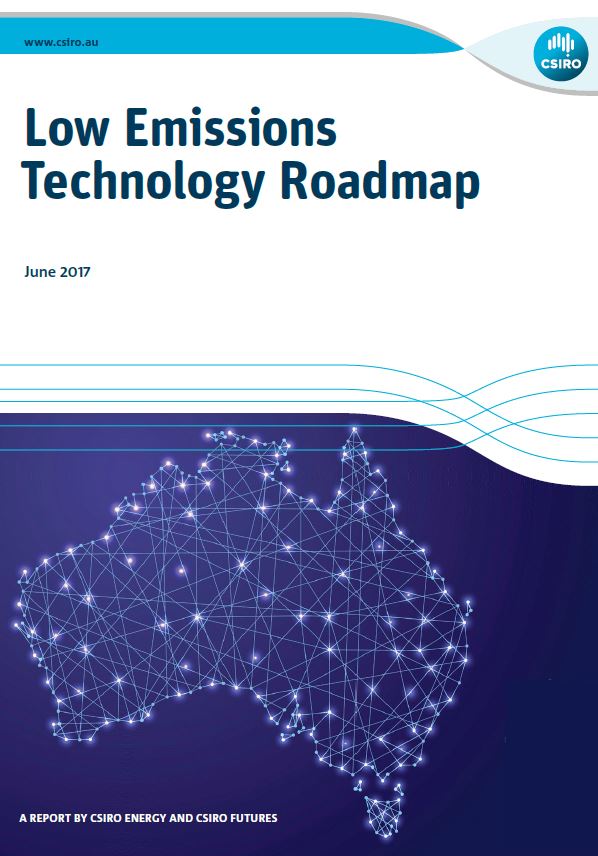 "In the midst of disruptive change within the energy sector, we must address the 'energy trilemma' of security, affordability and sustainability," CSIRO Chief Executive Dr Larry Marshall said.
"In the midst of disruptive change within the energy sector, we must address the 'energy trilemma' of security, affordability and sustainability," CSIRO Chief Executive Dr Larry Marshall said.
"We can't navigate the bumpy road of change without this Roadmap, using science to re-invent roadblocks into freeways.
"We think of coal as the past, but what if we could reinvent it into the feedstock for hydrogen?
"We think of lithium-ion batteries as the storage solution, but what if we could use chemical storage like ammonia which also offers safe transport and distribution using existing liquid infrastructure?
"CSIRO's Strategy 2020 is dedicated to using science to navigate Australia's industries, both traditional and emerging, into a brighter economic future enlightened by innovation."
CSIRO Energy Chief Economist Paul Graham noted that improvements in technology are often hard to predict, but Australia's diverse energy resources mean we can exploit new opportunities as they arise.
"History shows we are poor predictors of technological innovation – for example, at the start of this century no one thought solar photovoltaics would be a cost effective source of low emission electricity – but if we keep our options open, we have the opportunity to position Australia to achieve its emission targets and contribute to new global low emission energy supply chains," Mr Graham said.
The Low Emissions Technology Roadmap was prepared for the Australian Department of the Environment and Energy to provide input to the Government's 2017 Climate Policy Review.
View the report at www.csiro.au/letrThe Low Emissions Technology Roadmap provides an independent, science-based analysis of the technology options in the energy sector that can help Australia meet its 2030 emissions reduction target and create new opportunities for local industry.
In April 2016, CSIRO was engaged by the Australian Government to develop the Low Emissions Technology Roadmap to inform the 2017 Climate Policy review. The objectives of the report were to understand the technology options Australia has at its disposal to meet its emissions abatement commitments under the 2015 Paris Agreement as well as provide new economic opportunities for Australian industry.
Options for a rapidly changing energy sectorThe global energy sector is in the midst of a significant transition, driven by new technologies, changing consumer preferences, and efforts to reduce greenhouse gas emissions. The report establishes a framework for understanding the range of technologies available, current barriers and enablers to deployment. The technologies are grouped according to a series of options or ‘pathways’ that the Australian Government could invest in. Each have different risk profiles and associated opportunities.
Extensive opportunities waiting to be realisedWhile the transition to a low emissions economy is often framed in terms of cost, this transition will also create demand for new products and services both in Australia and in export markets. Australia is endowed with some of the world’s best energy resources, has good skills in low emissions technologies, strong institutions and established trading relationships with key consumers of energy. This report outlines where such advantages exist within the energy sector and demonstrates where Australia can benefit from a domestic and global transition to low emissions energy.
Executive summary [pdf · 1mb]Main report [pdf · 7mb]Technical report [pdf · 5mb]
- Australia is endowed with energy-rich resources and is well positioned to benefit from innovation in low emission technologies.
- Energy productivity will remain important in reducing energy costs and emission levels throughout the transition.
- Modelling conducted as part of the report suggests that new energy generation is likely to be mainly in wind, solar PV, storage and gas to meet our 2030 emissions reduction targets.
- While the technology pathways are comparable in terms of cost, they carry different levels of commercial, technical, social and stakeholder risks.
 "In the midst of disruptive change within the energy sector, we must address the 'energy trilemma' of security, affordability and sustainability," CSIRO Chief Executive Dr Larry Marshall said.
"In the midst of disruptive change within the energy sector, we must address the 'energy trilemma' of security, affordability and sustainability," CSIRO Chief Executive Dr Larry Marshall said.Complete Record Of Greenhouse Gases
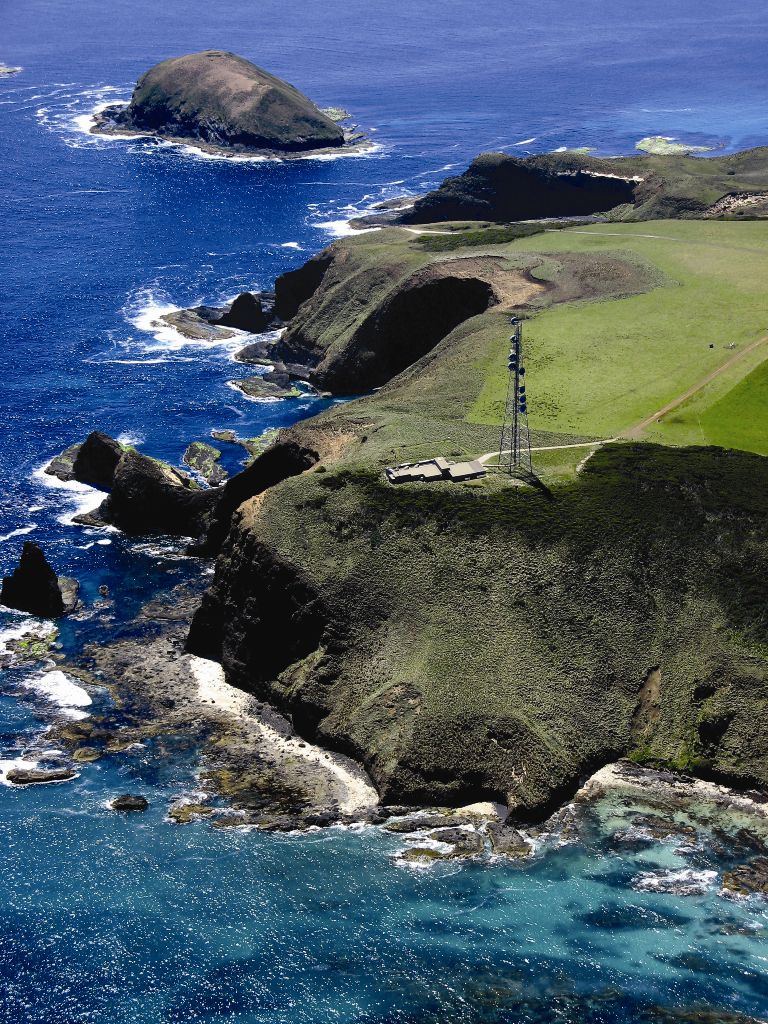
Data from the Cape Grim Air Pollution Baseline Station has been used to create the most comprehensive collection of greenhouse gas data.

Complete Record Of Greenhouse Gases
June 1, 2017: CSIRO
Australian scientists have published the most comprehensive and high quality records of greenhouse gases everLed by researchers from CSIRO's Climate Science Centre and the University of Melbourne, the records track the past and current changes in all 43 greenhouse gases that contribute to human-induced climate change.
CSIRO Principal Research Scientist and report co-author Dr David Etheridge said the paper published in the journal Geoscientific Model Developmentwas one of the largest Australian contributions to global climate change assessments ever.
"This continuous record over the last 2000 years has been meticulously constructed by combining greenhouse gas measurements from dozens of laboratories around the world," Dr Etheridge said.
"We took data from contemporary and archived air samples, and from air trapped in ice bubbles in polar ice cores and compacted snow, also called firn."
Australia (through CSIRO and the Bureau of Meteorology) is the major contributor to this global greenhouse gas record, using observations from the Bureau of Meteorology's Cape Grim station in northwest Tasmania and from the Cape Grim Air Archive.
CSIRO, with the Australian Antarctic Division, the Australian Nuclear Science and Technology Organisation and other collaborators, is also the primary source of greenhouse gas data in the pre-instrumental era, using measurements from air extracted from Antarctic ice and firn.
The record includes, for the first time, a set of 43 distinctive greenhouse gases that are released into the atmosphere as a result of human activities and industrial processes.
"These observations clearly show the relentless and near-continuous rise of some of the most important greenhouse gases like carbon dioxide, methane and nitrous oxide since 1750," Dr Etheridge said.
Report co-author Dr Paul Fraser from CSIRO said it was encouraging to see the decline in some greenhouse gases, such as CFC-12 and CFC-11, which is measurably in response to the Montreal Protocol.
Dr Malte Meinshausen from the University of Melbourne's Australian-German Climate & Energy College and lead author of the report said that this newly published database of continuous and high quality data will drive global climate model simulations currently being conducted by international modelling groups ahead of the next Intergovernmental Panel on Climate Change (IPCC) assessment report, due in 2021-2022.
"Following the marathon of decades of efforts in Australia and around the world to collect and process all those data, our study was taking the last step of putting it all together into one coherent picture," Dr Meinshausen said.
Dr Etheridge said that a comprehensive database of measurements was combined with information on aerosol, solar, volcanic and land-use impacts on climate to accurately simulate observed climate over past centuries in climate models.
"Providing long-term spatially and seasonally precise measurements of greenhouse gases for input into climate models will allow more robust future climate estimates," Dr Etheridge said.
New Report Identifies 50 Measures To Help Property Sector Move Towards Net Zero Carbon Buildings
1 June, 2017: Clean Energy Finance Corporation (CEFC)Australia's property sector is being urged to use readily available existing technologies to improve the long-term prospects for their properties, in a broader industry push towards net zero carbon buildings.
A new report from the Clean Energy Finance Corporation (CEFC) and consultants Norman Disney & Young (NDY) identifies 50 best practice initiatives that can be used across a wide variety of new and existing properties. The initiatives reflect the insights of major investors across the property sector, many of whom are at the forefront of Australia's clean energy transition.
CEFC property sector lead Chris Wade said the property sector was uniquely placed to be a major driver of energy efficiency, lower emissions and increased sustainability in Australia.
"Property accounts for almost a quarter of Australia's carbon emissions, confirming there is a pressing need for action in this area. Through this report, we are highlighting a wide range of clean energy technologies that currently aren't prescribed by the National Construction Code, but which are proven, readily available and can be deployed immediately," Mr Wade said.
"Importantly, these clean energy solutions offer property owners the potential to unlock billions of dollars in ongoing energy savings, and deliver positive investment returns. Two thirds of the initiatives have a payback period of less than 10 years, demonstrating the very strong commercial benefits of clean energy."
The report, Energy in Buildings: 50 Best Practice Initiatives, details clean energy opportunities across a wide range of buildings, from offices, retail and hotels to industrial (e.g. warehouse, manufacturing and logistics), healthcare (e.g. hospitals and laboratories), common living (e.g. aged care and student accommodation) and education.
The practical guide indicates the climate zones where specific initiatives are likely to deliver the most positive benefits, and indicates potential upfront costs and typical payback periods.
Tony Arnel, Global Director of Sustainability at NDY said: "Greater availability of useful, practical information on efficiency measures will accelerate the market transformation needed to deliver high performance, low carbon buildings.
"It's also important to recognise that buildings designed now, for completion in two or three years, will enter a market where they will be competing with an increasing volume of higher performance building stock.
"This handbook will help guide investment decision making, drive the uptake of lower carbon and renewable energy solutions, and deliver real savings for asset owners and end users. NDY is proud to partner with the CEFC on this important resource. We hope these 50 best practice initiatives will encourage building owners to be more ambitious about the energy performance of their buildings, helping to reduce energy costs and position their assets for a low carbon future."
The peak body for sustainability in the built environment, the Australian Sustainable Built Environment Council (ASBEC) is supporting a push towards zero carbon buildings by 2050. It has reported that cost effective energy efficiency and fuel switching in buildings can more than halve their projected 2050 carbon emissions, with the use of distributed solar PV able to eliminate the remaining emissions. ASBEC points to initiatives such as the European Directive on Energy Performance of Buildings and the United Kingdom's requirement that all new non-domestic buildings be zero carbon by 2019, as examples of a global shift towards zero carbon buildings.
Mr Wade added: "The CEFC/NDY report provides clear evidence that clean energy isn't just about new buildings. In fact, most of the 50 measures can be applied to existing buildings, giving us confidence about the strong potential for the property sector to take practical steps to lift energy efficiency while reducing energy costs and emissions.
"These measures will help the market adapt to rapid and continuous changes to technology and industry practice, which are seeing new technologies increasingly transition to standard practice, with lower costs."
The report includes a number of familiar technologies, such as solar PV, LED lighting and improved heating, ventilation and air conditioning systems. Other best practice initiatives measures include:- Light colour and reflective external materials, which typically cost less than 0.1 per cent of the building's cost to implement and pay back in less than five years
- Data analytics for building management systems in existing buildings, which typically cost less than 0.3 per cent of the building's cost and have an investment payback period of less than five years
- Electronically commutated fans, using microprocessor-controlled brushless motors, which also typically cost less than 0.3 per cent of the building's cost to implement and pay back in less than five years.
The CEFC has recently stepped up its investments in property, as part of its Sustainable Cities investment program. It's substantial investment pipeline includes some 20 potential projects, seeking an estimated $1.5 billion in CEFC finance, towards projects valued at more than $5.5 billion.
CEFC investment commitments in the property sector include:- A landmark $170 million commitment to enable St George Community Housing to build 500 new energy efficient homes in Sydney.
- $110 million equity in the Investa Commercial Property Fund, the first Australian property company to commit to a Science Based Target of net zero emissions by 2040, supported by a work plan of carbon reduction programs.
- $100 million equity in the AMP Capital Wholesale Office Fund, targeting a portfolio of net zero carbon emission buildings by 2030.
- A $68 million commitment as sole debt financier to Quintessential Equity's $120 million 1 Malop St development in Geelong, which is targeting a 5.5 star NABERs rating.
ABOUT NORMAN DISNEY & YOUNGNorman Disney & Young (NDY) is a professional services firm of consulting engineers delivering innovative and sustainable solutions for a diverse group of clients. With offices in Australia, Canada, Hong Kong, Malaysia, New Zealand and the United Kingdom, its purpose is Making Spaces Work. Established in 1959, NDY remains a private company employing over 700 people providing engineering services for key markets in civic, education, health, industrial, mission critical, offices, residential and hotels, retail and transport. For more information, visit http://www.ndy.com/
- Light colour and reflective external materials, which typically cost less than 0.1 per cent of the building's cost to implement and pay back in less than five years
- Data analytics for building management systems in existing buildings, which typically cost less than 0.3 per cent of the building's cost and have an investment payback period of less than five years
- Electronically commutated fans, using microprocessor-controlled brushless motors, which also typically cost less than 0.3 per cent of the building's cost to implement and pay back in less than five years.
- A landmark $170 million commitment to enable St George Community Housing to build 500 new energy efficient homes in Sydney.
- $110 million equity in the Investa Commercial Property Fund, the first Australian property company to commit to a Science Based Target of net zero emissions by 2040, supported by a work plan of carbon reduction programs.
- $100 million equity in the AMP Capital Wholesale Office Fund, targeting a portfolio of net zero carbon emission buildings by 2030.
- A $68 million commitment as sole debt financier to Quintessential Equity's $120 million 1 Malop St development in Geelong, which is targeting a 5.5 star NABERs rating.
PNG Expedition Discovers Largest Trees At Extreme Altitudes
31 May 2017: University of Queensland
The first field campaign surveying Papua New Guinea’s lush primary forests from the coast to clouds has revealed the high mountain tops may house the largest trees recorded globally at such extreme altitudes.
The study - which involved The University of Queensland’s Dr John Dwyer and James Cook University’s Professor Michael Bird - was led by Dr Michelle Venter, a postdoctoral fellow at the University of Northern British Columbia, Canada.
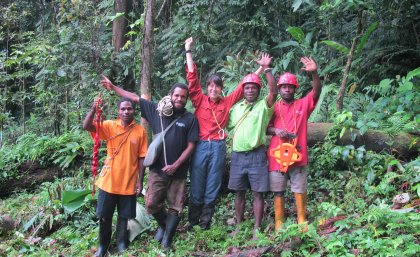
The research team recorded more than 15 tree families with individual specimens growing 30-40m tall at extreme altitudes.Credit: Image courtesy of University of Queensland
“The study may force a re-think of what we know about the ideal environments for growing very large trees,” said Dr Dwyer, a UQ School of Biological Sciences’ lecturer and CSIRO researcher.
Dr Venter led seven field expeditions in areas far from roads and villages, with the help of more than 70 field assistants from five forest-dependent communities, working on slopes of up to 88 degrees.
They studied 195 forest plots in the rugged and remote Morobe province along an elevation gradient spanning from the coastal lowland forests (50m) to upper montane tropical forests (3100m).
Unexpectedly, the researchers found that the forest biomass had a major peak at altitudes of 2400-3100m, altitudes where forests struggle to reach more than 15m tall in other parts of the world.
“Tropical montane forests are typically squat and gnarly,” Dr Venter said.
“Current thinking is that tall mountains make small trees.
“However, we recorded more than 15 tree families with individuals growing 30-40m tall at extreme altitudes, which brings this assumption into question.”
The tallest trees included a 41m high Nothofagus starkenborghii, one of the southern beeches whose ancestors dominated Gondwanan forests for millions of years.
Dr Dwyer said the researchers became excited when they realised the unique climate conditions found on mountain tops of PNG were remarkably similar to those of temperate maritime areas known to grow the largest trees in the world
“Think of the foggy mid-west coast of the USA, which boasts the epically large coast redwoods,” Dr Venter said.
The world’s tallest known tree is a 115.8m (380ft) coast redwood (Sequoia sempervirens) found in California, and the second-tallest reliably measured specimen, is a 99.82m (327.5ft) mountain ash (Eucalptytus regnans) from the Arve Valley in Tasmania.
Several Australian gums from Tasmania and Victoria are also in the top 20 monument trees list.
Coast redwoods occur in elevations up to about 920m, while the Australian mountain ash occurs in cool mountainous areas to 1000 metres altitude, considerably less than the PNG altitudes.
James Cook University’s Professor Bird said: “Believe it or not, why and how trees grow large is still a topic for investigation and reasons for the persistence of large old trees are still not clearly known.”
“Large trees are susceptible to many interacting threats, from disease to climate change, and because of their size and age, they don’t adapt well to rapidly changing, human-modified environments.”
Michelle Venter, John Dwyer, Wouter Dieleman, Anurag Ramachandra, David Gillieson, Susan Laurance, Lucas A. Cernusak, Bruce Beehler, Rigel Jensen, Michael I. Bird. Optimal climate for large trees at high elevations drives patterns of biomass in remote forests of Papua New Guinea.Global Change Biology, 2017; DOI: 10.1111/gcb.13741

Avalon Boomerang Bags: An Idea That's Spreading To Stop Plastic Bag Use
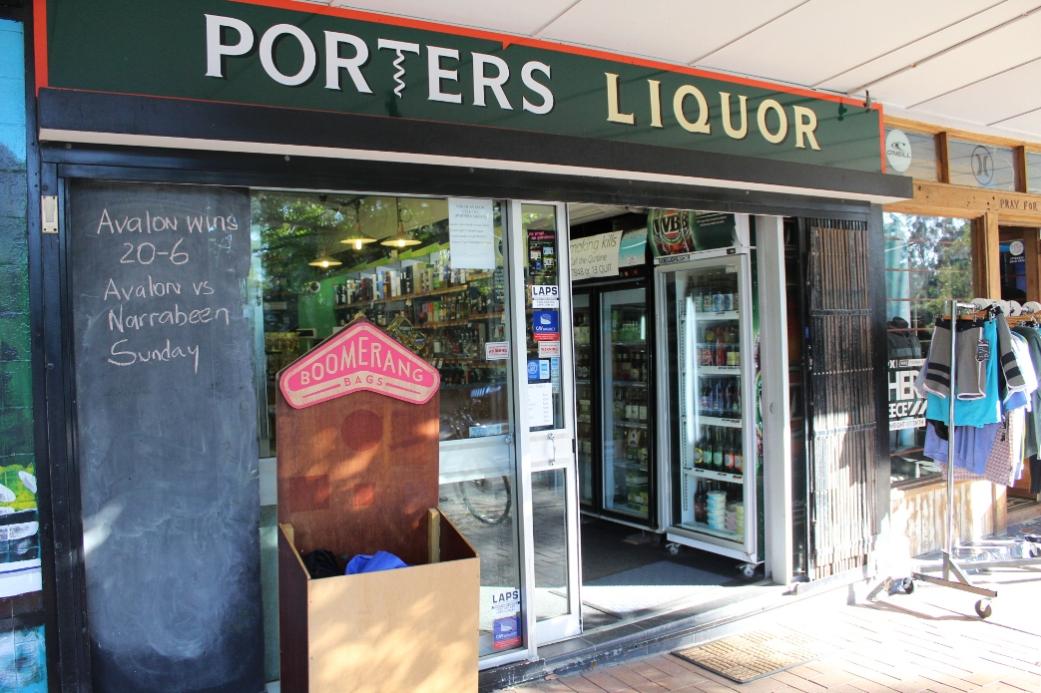 Avalon Boomerang Bags - now at North Avalon shops - A J Guesdon photo, 25.5.2017
Avalon Boomerang Bags - now at North Avalon shops - A J Guesdon photo, 25.5.2017

Avalon Boomerang Bags
Tuesdays
11am-5pm @ sewcraft cook Unit 20/14 Polo Ave Mona Vale
Boomerang Bags is a bag-share initiative involving the installation of a number of ‘Boomerang Bag’ boxes throughout any given business district, shopping centre, street or market. Each box is stocked with re-useable bags for customers to borrow if they have forgotten to bring their own.
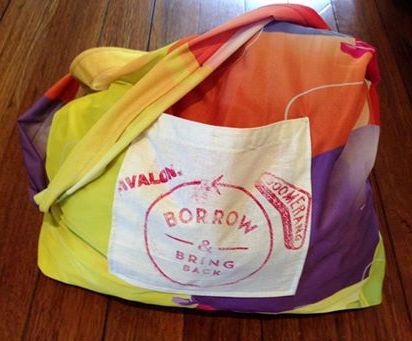
Unlike the traditional purchase-and-keep approach, Boomerang Bags are free, and local community members are responsible for returning the bags once they’re no longer required. The availability of free re-useable bags reduces the reliance of local businesses to supply bags to all customers, and encourages a mentality of re-use among local communities, thereby reducing the amount of plastic bag material entering our landfills and waterways.
So who makes the Boomerang Bags? Well, you do! Boomerang Bags are made by local communities for local communities, and are sewn from recycled and donated materials.
Get in touch if you'd like to donate materials, join us making bags, or implement Boomerang Bags in your own local area!

Energy Supplement Cuts Misguided, Say Seniors
31 May 2017: National SeniorsNational Seniors has rejected Federal Government moves to scuttle the energy supplement for new Age Pension recipients from September 20.
Chief Advocate Ian Henschke said today the government’s plan to cut the supplement in a bid to save almost $1 billion over four years was misguided.
Full and part pensioners were consistently being targeted for savings when their incomes were among the lowest in the country.
“The cuts mean a single aged pension will drop $14 per fortnight, or $365 a year, while couples will be $21.20 a fortnight (or about $550 a year) worse off,” Mr Henschke said
“Given the aged pension tops out at $888 a fortnight for a single person and $1339.40 for a couple, it’s hard to see why they are the ones being asked to get by on even less.
Mr Henschke said National Seniors was also disappointed the supplement would be removed for new recipients of Newstart and those on the disability support pension from September 20.
“Energy prices continue to rise and the supplement is about the equivalent of one quarter’s bill for most people,” Mr Henschke said.
“This can make a huge difference to the household budget when, if you’re a single age pensioner, you only receive $23,000 to cover rent, utilities and everything else. It’s understandable why some older people are forced to choose between food and power, especially during the colder months when they need heating.”
Mr Henschke said the government’s one-off Energy Assistance Payment of $75 for singles and $125 for couples, to be paid on 20 June, would be of little comfort to many older Australians.
“It’s a lot less than the supplement, and for people who had planned their retirements based on the concessions available to pensioners a year ago, these changes will hit particularly hard,” he said.
“It might be difficult for some people to comprehend, but $365 or $550 a year can make a big difference if you are dependent on an Age Pension and have no way to increase your income.”
Find Out About Your Aged Care Options Before You Need Them
1 June 2017: Media Release - The Hon Ken Wyatt AM, MP, Minister for Aged Care, Minister for Indigenous HealthA variety of aged care services and support options are available to help older people remain independent and enjoying life in their communities, the Federal Minister for Aged Care, Ken Wyatt, said today.
Launching a national awareness campaign promoting the Australian Government’s My Aged Care website and a national 1800 phone line, Minister Wyatt said that older people wanted to live independently as long as possible.
“Older Australians, their families and carers are being encouraged to find out about their aged care options,” he said.
“Making inquiries about aged care, before it is needed urgently, makes a lot of sense.
“It is very stressful when people are faced with a health crisis or an accident happens and they may suddenly find that they need help.
“They’re trying to find out what their aged care options are, in a hurry, but they don’t know where to start.
“The best place to start is the My Aged Care website and phone line, a one stop shop which provides information about services available in the local area, how to access them, costs and other information,” Minister Wyatt said.
He said the new awareness campaign provides examples of aged care support that people, depending on their care needs, may be eligible to receive, including a range of services provided in the person’s own home.
“These include home maintenance and modifications, help with household jobs like cleaning, assistance with transport, and nursing and personal care,” Minister Wyatt said.
“The campaign also explains that calling the My Aged Care phone line is the first step in taking up any aged care service.”
The advertising campaign will run in newspapers, magazines, radio, digital and social media.
Other public relations activities will be undertaken, including materials being available in 4,820 GP surgeries across the country.
“The Australian Government wants all older Australians, their families and carers, to know about their aged care options,” Minister Wyatt said.
“If you are finding it harder to do the things you used to do and feel you need a bit of support at home, find the help you need with My Aged Care.”
More details is available through the My Aged Care website and the information phone line on 1800 200 422.
Eco-Label In Exchange For Less Chemicals On Rice Fields
June 2, 2017: Technical University of Munich (TUM)
Money isn't always everything: Taiwanese rice farmers are willing to produce in a more environmentally friendly fashion if this would earn them an eco-label for their products. For such a label, they are even prepared to accept lower compensation payments for a reduction in the use of fertilizers. These were the findings of a study conducted by the Technical University of Munich (TUM) at the Chair Group for Agricultural Production and Resource Economics for agricultural enterprises. For this study, incentives for agri-environmental measures were investigated, such as more sustainable cultivation methods.
In order to achieve higher yields, chemical fertilizers are often excessively employed in Asian countries -- to the great detriment of the environment. This leads to high amounts of nitrogen entering the groundwater, which is not only a health hazard for the population, but also negatively impacts the flora and fauna. At the same time, nitrogen contributes to the loss of biodiversity and accelerates climate change. The intensive application of fertilizers during rice cultivation has already led to the loss of numerous species in Asia, Australia, Western Europe, and in North and South America.
Problem of over-fertilization in Asian countriesThis explains the widespread problem of over-fertilization encountered from China and South Korea to Vietnam and Taiwan. For the study conducted by the Chair Group for Agricultural Production and Resource Economics for agricultural enterprises at the Technical University of Munich (TUM), a team led by Professor Johannes Sauer investigated which incentives would be needed in order for farmers to use less chemical fertilizers.
To date, there have mainly been scientific studies investigating the technological options for the reduced use of fertilizers. But how willing are farmers to reduce the use of fertilizers, and what are the necessary conditions?
The authors of the study decided to collect their data from rice farmers, because rice is one of the most important staple foods worldwide. The data evaluated was collected in a 'discrete choice experiment' with around 300 rice farmers. Farmers could choose from eight hypothetical alternatives, which each contained several variants. This took place multiple times in order to find out what they would ultimately prefer.
Eco-label a high priority for farmers"The Taiwanese farmers surveyed by our team assigned a high value to an eco-label, because this communicates to the consumer that this product was manufactured in an environmentally friendly manner," said Professor Sauer, commenting on the result -- "the label is more important to them than financial compensation. This is not only good for farmers, but also a positive outcome for taxpayers and consumers." According to the authors of the study, factors that influenced the choices made included the prospects of higher profits from the eco-label, but also the self-perception of the farmers.
This study now aims to point out to politicians how they could structure incentives to reduce the use of agricultural chemicals. One of the authors of the study is already consulting for agricultural policymakers in Taiwan.
Sheng-Han-Erin Chang, David Wuepper, Alois Heissenhuber, Johannes Sauer. Investigating rice farmers’ preferences for an agri-environmental scheme: Is an eco-label a substitute for payments?Land Use Policy, 2017; 64: 374 DOI: 10.1016/j.landusepol.2017.03.014
Have Your Say On NSW Government's Biodiversity Reforms
Wednesday, May 10, 2017: Media Release - The Hon. Niall Blair, Minister for Primary Industries, Minister for Regional Water, Minister for Trade and Industry and The Hon. Gabrielle Upton, Minister for the Environment The NSW Government will undertake one more round of public consultation before its improved and simpler land management reforms take effect.
NSW Minister for Primary Industries Niall Blair said the new system would provide strong environmental safeguards, while ensuring routine farm work was exempt from regulation.
“These landmark reforms will allow our farmers to produce the food and fibre that we need and increase their productivity, while also producing better outcomes for our environment,” Mr Blair said.
“I am proud we will very soon deliver on an election commitment we made to farmers to repeal the unfair and ineffective Native Vegetation Act.”
This package is the final stage of the NSW Government’s land management and biodiversity conservation reforms.
NSW Environment Minister Gabrielle Upton said the reforms were backed by an unprecedented investment of $100 million in the Saving Our Species program, as well as $240 million over five years, and $70 million each year after that, for private land conservation.
“These reforms also put in place strong protections for native plants and animals including threatened species,” Ms Upton said.
The regulations, codes and guidelines and other documents released for public comment are:- a draft principal Biodiversity Conservation Regulation and its supporting regulatory impact statement
- a draft Local Land Services Amendment Regulation
- a draft Environmental Planning and Assessment Amendment (Biodiversity Conservation)Regulation
- an Explanation of Intended Effects for a State Environmental Planning Policy (Vegetation)
- a draft Land Management (Native Vegetation) Code
- a draft Biodiversity Assessment Method and BAM tool (Link)
- a draft Accreditation Scheme for the Application of the Biodiversity Assessment Method
- an example of a Sensitive Biodiversity Values Land Map
- draft guidance for considering serious and irreversible impacts
- a draft offsets payment calculator and user manual.
Facts sheets and guides that provide detailed information on key topic areas are also available to assist you in making a submission.
Consultation closes on 21 June and the reforms will commence on 25 August 2017. how to Make a submission hereFor more information, visit landmanagement.nsw.gov.au
- a draft principal Biodiversity Conservation Regulation and its supporting regulatory impact statement
- a draft Local Land Services Amendment Regulation
- a draft Environmental Planning and Assessment Amendment (Biodiversity Conservation)Regulation
- an Explanation of Intended Effects for a State Environmental Planning Policy (Vegetation)
- a draft Land Management (Native Vegetation) Code
- a draft Biodiversity Assessment Method and BAM tool (Link)
- a draft Accreditation Scheme for the Application of the Biodiversity Assessment Method
- an example of a Sensitive Biodiversity Values Land Map
- draft guidance for considering serious and irreversible impacts
- a draft offsets payment calculator and user manual.
Annual Winter Trail Closures In Barrington Tops
Media release: 2 June 2017With the arrival of winter, visitors to Barrington Tops National Park and State Conservation Area are advised that for safety, a number of trails are temporarily closed until 1 October 2017.
Trail closures include the Barrington Trail (north and south), Paddys Ridge Trail, Butchers Swamp Trail, Bullock Brush Trail, Tugalow Trail and Thunderbolts Trail.
Some trails were closed earlier than usual this year to allow a coordinated wild dog control program to occur across the Barrington Tops.
The temporary closures mean that there is no vehicle access to Little Murray, Junction Pools and Gummi Falls camping areas, during winter.
National Parks and Wildlife Service (NPWS) Area Manager Anthony Signor said the trails are closed annually during winter as a safety precaution and to protect them from damage, given the likelihood of extreme weather over this time.
"These 4WD trails get particularly wet and slippery during winter months, and with the cold, short days, they do not dry out," Mr Signor said.
"In addition, variable trail conditions combined with sudden changes in weather creates the potential for people to become stranded in these more remote areas of the park.
"Winter is a fabulous time to visit Barrington Tops, and many popular areas are still open for exploring.
"However visitors planning a trip are warned to be prepared for changing, extremely cold and possibly wet weather conditions, to let someone know their plans before travelling, and to be aware that mobile phone coverage is patchy in this remote area.
"The main road from Gloucester to Scone remains open, but motorists are advised to drive to conditions and travel with care", Mr Signor said.
Visitors are encouraged to check the latest trail and road closure information at www.nationalparks.nsw.gov.au/alerts before travelling.
For further information about Barrington Tops National Park and State Conservation Area, please contact the NPWS Scone office on 02 6540 2300 or NPWS Gloucester office on 02 6538 5300.
Have Your Say On First Cottan-Bimbang National Park Draft Plan Of Management
24 May 2017: Media release - NPWSThe National Parks and Wildlife Service (NPWS) is calling for comment on the draft Plan of Management for Cottan-Bimbang National Park and State Conservation Area (SCA), and The Cells SCA.
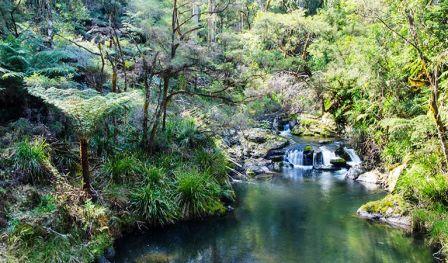
NPWS Director Russell Madeley said the draft plan is on exhibition until 14 August and outlines the parks' values and proposed management.
"Plans of Management are legal documents that enable us to have a clear understanding of the values of the reserves and how we will manage them into the future," said Mr Madeley.
"The draft Plan of Management reflects the park as it is today and was put together with input from a variety of stakeholders including Aboriginal representatives, Forestry Corporation of NSW, and Lower North Coast and Northern Tablelands regional advisory committees.
"These parks are located between Wauchope and Walcha in the hinterland of the NSW north coast and form part of one of the largest connecting areas of old-growth forest in northern NSW.
"The parks contain varied and rugged wilderness landscape of high conservation values, protect a wealth of Aboriginal cultural heritage and are home to a section of the original convict-built road linking Port Macquarie and Walcha.
"Other important natural values include Mount Seaview Wilderness Area, 29 threatened animal species and five threatened plant species.
"A feature of the new plan is to improve a number of existing recreational opportunities including four-wheel driving, trail bike riding and horse riding.
"We have worked closely with Port Macquarie and District 4WD Club to identify the most popular four-wheel drive routes, while keeping them outside the declared wilderness areas.
The draft Plan of Management for Cottan-Bimbang National Park and SCA and The Cells SCA can be viewed at:- Gingers Creek Café on the Oxley Highway between Walcha and Wauchope
- NPWS Office, 22 Blackbutt Road Port Macquarie, 2444, NSW
- NPWS Office, 78 Hargreaves Drive, Taree, 2430, NSW
- NPWS Office, 188W North Street Walcha, 2354, NSW
- OEH Customer Centre (Level 14, 59-61 Goulburn Street, Sydney)
- OEH 'Have your say' website athttps://engage.environment.nsw.gov.au- Cottan-Bimbang National Park group draft plan of management
Submissions on the plan must be received by 14 August 2017.

- Gingers Creek Café on the Oxley Highway between Walcha and Wauchope
- NPWS Office, 22 Blackbutt Road Port Macquarie, 2444, NSW
- NPWS Office, 78 Hargreaves Drive, Taree, 2430, NSW
- NPWS Office, 188W North Street Walcha, 2354, NSW
- OEH Customer Centre (Level 14, 59-61 Goulburn Street, Sydney)
- OEH 'Have your say' website athttps://engage.environment.nsw.gov.au- Cottan-Bimbang National Park group draft plan of management
Review Of Complying Development In Greenfield Areas
The NSW Government is seeking your feedback on the Background Paper - A Review of Complying Development in Greenfield Areas and Explanation of Intended Effect (EIE) for a proposed new Greenfield Housing Code.
We’re committed to speeding up the delivery of new homes in new land release (greenfield) areas to meet the needs of NSW’s growing population and improve housing affordability.
Complying development is a streamlined planning and building approval which allows the construction of one and two storey homes and associated development, such as swimming pools and balconies, provided they comply with the pre-determined development standards in State Environmental Planning Policy (Exempt and Complying Development Codes) 2008 (Codes SEPP).
In 2014/2015, complying development certificates were issued on average in 20 days. Promoting the fast-tracked complying development approval pathway saves homeowners time and money.
• recommendations to overcome barriers to using complying development in greenfield areas (for example delays with obtaining other approvals and the inability to carry out complying development on unregistered lots); • guidance on well-designed subdivisions for greenfield areas; • simplified and tailored development standards for complying development under a new Greenfield Housing Code.
The proposed Greenfield Housing Code, is detailed in the EIE and will form part of the State policy for exempt and complying development. The simplified standards have been tailored to suit the requirements in greenfield areas, accommodating narrower lot widths, simplifying setbacks for ground and upper levels and allowing double garages on 10m wide lots.
A simplified and tailored Greenfield Housing Code will make it easier and cheaper for people to find or build homes to suit their lifestyles, and help grow the economy by providing a boost to the housing industry and the wider NSW economy.
The Code also ensures greenfield areas are leafier and more environmentally friendly by including landscaping requirements for complying developments.
The Department also proposes developing a set of master planning and subdivision guidelines for greenfield areas to be used by councils to inform their own Development Control Plans and by applicants to provide details on developing well-designed subdivisions and masterplans.
We welcome your feedback on the proposed Greenfield Housing Code, and in which new release areas it should apply.
Submissions can be made until 16 June 2017: • by email to: codes@planning.nsw.gov.au • by mail to: Director, Codes and Approval Pathways, NSW Department of Planning and Environment, GPO Box 39, Sydney, NSW 2001
Attachments & ResourcesReview of Complying Development in Greenfield Areas(3)Review of Complying Development in Greenfield Areas FAQ.pdf (816.5 KB)Key dates and other informationExhibition Commences 16/05/2017Exhibition Concludes 16/06/2017
Bird Walks And Talks 2017: PNHA
Come and see and hear some of our fantastic native birds, many of which you'll never see in your garden. Join in a Sunday guided bird walk with Pittwater Natural Heritage Association. All walks start at 8am and end about 10am.
August 27 Chiltern Track. Meet at gate, off northern of Chiltern Rd Ingleside.
September 17 Irrawong reserve. Meet at corner Irrawong Rd and Epworth Rd.November 26 Warriewood Wetlands. Meet end of Katoa Close, north Narrabeen.
Bring binoculars if possible. Drink, hat and comfortable shoes.More information contact pnhabirdwatching@gmail.com or Ph Kerry on 0402 605 721.
You don't need to book but if we know you're coming we'll watch out for you. Call if in doubt about weather as we won't go out if it's raining.


Barangaroo Public Consultation
The Barangaroo precinct is divided into three sections:Barangaroo South – a mixed-use neighbourhood which accommodates commercial office buildings, residential apartments, shops, cafes, restaurants, a resort hotel, and cultural facilities.Central Barangaroo – sitting between the Barangaroo Reserve andBarangaroo South, Central Barangaroo (5.2 hectares) includes a cultural and civic focal point for recreation, relaxation, events, festivals, entertainment and leisure activities. Barangaroo Reserve – six hectares of open space with lookouts over Sydney Harbour, extensive walking and cycling trails, idyllic coves, picnic spots and places for quiet contemplation.
The Department is asking for feedback on proposed developments to the following areas of Barangaroo:Watermans Cove at Sydney Harbour - including an array of public seating and a boardwalk featuring steps down to the waterWatermans Quay - increasing the width of the current temporary street and including generous tree-lined footpaths and pedestrian crossings Hickson Park - one-hectare of public parkland with free Wi-Fi, eating and meeting spaces, park furniture, and bike parkingWulugul Walk – an extension of the existing boardwalk which hugs Sydney Harbour along the length of Barangaroo Barangaroo Avenue – an extension of the existing street to create a slow speed pedestrian friendly street.
The development proposal is on public exhibition from 18 May until 19 June 2017 and feedback is invited. Submissions must be received by 19 June 2017 to be considered.
You can make a submission by:post to: Director Key Sites Assessments, Planning Services, Department of Planning and Environment, GPO Box 39, Sydney, NSW 2001.
All submissions will be made public in line with the Department’s objective to promote an open and transparent planning system. If you do not want your name published, please state this clearly at the top of your submission. Before making a submission, please read our privacy statement.
Barangaroo Public Domain: Hickson Park, Watermans Quay, Barangaroo Avenue, Wulugul Walk, Watermans Cove and the Public Pier
The Planning Application seeks approval for public domain works for all of Hickson Park (located within both Barangaroo South and Central Precincts), Watermans Quay, the remaining section of Barangaroo Avenue in Barangaroo South, Wulugul Walk (including the expanded boardwalk required by condition of Concept Plan MOD 8), Watermans Cove and the Public Pier.
Exhibition Start 18/05/2017Exhibition End 19/06/2017
2017 Eco Schools Grants Program Open For Applications
Media release: 26 April 2017Educators and school communities are once again encouraged to apply for an Eco Schools Grant to ignite and nurture their students’ passion to learn about the environment.
Eighty grants of $3,500 each are now available under the NSW Environmental Trust Eco Schools Grants program, which has supported a variety of environmental projects in schools from waste management to worm farms for nearly 20 years.
Office of Environment and Heritage Executive Director Ian Hunter said the grants help provide curriculum-based environmental education for children and the program proudly funded its 1000th project last year.
“Eco Schools Grants recognise the important work of educators in environmental conservation projects and I encourage schools to apply for one of the eighty grants,” Mr Hunter said.
“Research shows that when young people develop an appreciation of the environment early on it influences their behaviours later in life.
“Schools are uniquely placed to teach students about sustainability, why it’s important to take care of our environment and what good environmental citizenship looks like,” Mr Hunter said.
Teachers from Bonnyrigg High School in Sydney’s west used their Eco Schools Grant to bring history and science to life through environmental education with a medieval food garden.
“Students learned about garden functionality, soil health and sustainable living. Science students also used the plants to study photosynthesis and helped their school create a resource to facilitate hands-on learning for years to come,” Mr Hunter said.
“Grants this year will be offered to student-focused environmental management projects, including water and energy conservation, recycling, bush regeneration, habitat improvement and food gardens.
“Schools are also encouraged to develop projects for students with special needs,” Mr Hunter said. Interested schools in NSW are encouraged to register on theSustainable Schools NSW website and grant applications can be submitted until Monday 19 June, 2017.
All registered schools in NSW can apply for funding for new projects or a separate additional stage of a previous project. Schools currently delivering an existing Eco Schools Grant funded project are not eligible.
For more information visit: www.environment.nsw.gov.au/grants/schools.htm
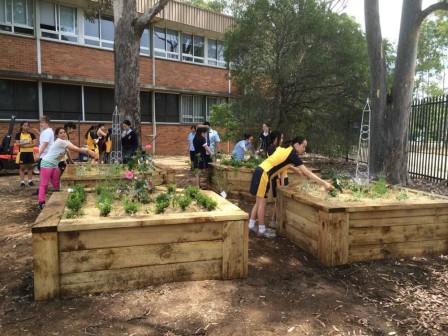
Photo - Bonnyrigg Highschool Eco Schools Grants GardenEducators and school communities are once again encouraged to apply for an Eco Schools Grant to ignite and nurture their students’ passion to learn about the environment. Photo Courtesy OEH

Sydneysiders Urged To Listen Out For 'Powerful Owls'
April 7th, 2017Beth Mott, Birdlife Australia is asking Sydney residents to report the presence of Powerful owls in their area.
Please report any sightings to beth.mott@birdlife.org.au
If you are interested in becoming a Powerful Owl Project volunteer or would like to submit a sighting of a Powerful Owl, please contactpowerfulowl@birdlife.org.au.
You can help us learn more about the Powerful Owls by letting us know if you see or hear one in your area (particularly around Sydney, Blue Mountains, Newcastle, Central Coast, Illawarra). Send an email (to the email addresses above) with your location (street address or GPS location), an attached photo or call recording (if you have it), details of when you saw or heard the bird, and anything interesting you noticed about where it was or what it was doing (e.g. holding prey, perched on a tree branch).
Caution: rarely, some birds can get very aggressive while nesting and it can be very dangerous for people to be too close to the nest tree at night. If you come across a Powerful Owl nest hollow, use caution and please do not approach it (especially at night). Do not use flash photography at the nest as this may disturb the birds and cause them to abandon the nest.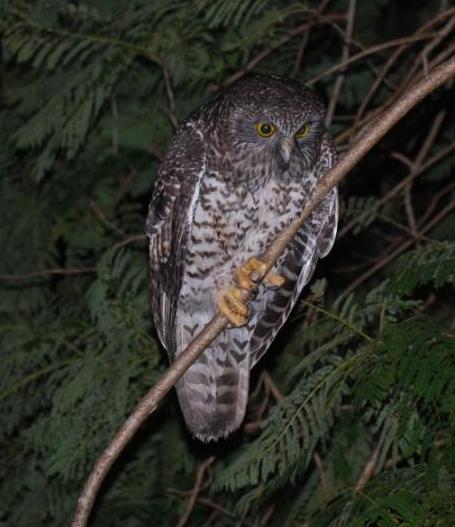
Powerful owl Ninox strenua- picture by Paul Wheeler, 2014 - at Clareville.
Department Seeks Community Input On Hume Coal Project Proposal
30.03.2017: Departmental Media Release -Department of Planning and EnvironmentThe local community in the Southern Highlands is encouraged to give feedback on an application for an underground coal mine that will go on public exhibition today.
The Department of Planning and Environment is exhibiting the Environmental Impact Statement (EIS) application for the Hume Coal Project for an extended period of 90 days, beginning today until 30 June.
Clay Preshaw, Director of Resource Assessments, said members of the community are encouraged to give feedback as part of the community consultation process.
“Every submission is read and considered as part of the Department’s assessment of the EIS,” Mr Preshaw said. “We are seeking feedback from the public and a wide range of stakeholders. We encourage any landowner, individual or group to share their views on the Hume Coal Project and Berrima Rail Project with us.
“There is a high level of public interest in these applications and we understand the EIS is a lengthy document - that’s why we are going above and beyond in seeking community input.”
Mr Preshaw said the Department had arranged public information sessions, giving the local Southern Highlands community a chance to meet with Department representatives in person.
“Information on the assessment process will be provided and department officers will be able to answer any questions the public may have about the planning process,” he said. “We will also meet with special interest groups during the exhibition period. “The Department assesses all applications on their merits, in accordance with the planning legislation and all relevant NSW Government policies and guidelines.” Mr Preshaw added that the Department will apply a rigorous, scientific approach to the assessment of the proposal and seek the best advice available from independent experts. “At this stage, the Department will seek advice from experts in the fields of groundwater, mining, subsidence, and economics. We will also be seeking expert advice from specialist government agencies.” The Hume Coal Project proposals involves a new underground coal mine extracting up to 3.5 million tonnes of coal a year over 19 years. The associated Berrima Rail Project involves the extension of the Berrima railway line to connect the proposed mine to the Main Southern Railway. For more information please visit the Major Projects website
Applications Open For Threatened Species Recovery Fund
Media release: 5 May 2017 - The Hon. Josh Frydenberg MP
Minister for the Environment and EnergyThe Turnbull Government invites community organisations across Australia to apply for funding under the Government’s Threatened Species Recovery Fund to help fight extinction.
Through the Threatened Species Strategy, the Government is committed to turning around the fortunes of nationally-threatened species like the bilby, numbat, mountain pygmy possum, eastern bettong, cassowary, swift parrot and Australia’s endangered eucalyptus trees.
The $5 million Threatened Species Recovery Fund, through the National Landcare Programme, makes funds available for projects that can help meet the targets and objectives in the Threatened Species Strategy through strengthened community involvement in the recovery efforts.
The Fund will provide seed money and community grants—worth between $20,000 and $250,000 (GST exclusive)—for local projects that strongly align with the targets and objectives of the Strategy. The grants will be awarded to eligible groups through a competitive process.
This Fund further highlights the Turnbull Government’s commitment to protecting our native species.
Since the appointment of the Threatened Species Commissioner in June 2014, the Government has mobilised more than $211 million for projects that support and protect our threatened species.
We have delivered Australia’s first Threatened Species Strategy which sets out clear and measurable targets to secure the future of 20 priority birds, 20 priority mammals and 30 priority plants by 2020. It also commits to eradicating feral cats from five islands and establishing 10 mainland wildlife enclosures free of feral cats.
In February this year, I launched Australia’s first Threatened Species Prospectus, which invites business, industry and the philanthropic sector to partner with government to invest in over 50 science-based projects that fight extinction.
Community project proposals for support from the Fund that leverage private sector investment and align with projects in the Prospectus are encouraged.
More information on the Threatened Species Recovery Fund, including details on how to apply, can be found on the National Landcare Programme website: Applications close on 15 June 2017.
Energy Locals For 100% Carbon Neutral Plans
From Surf Life Saving NSW Interested in 100% carbon neutral plans, huge solar feed in tariffs and Australian owned and operated in your energy provider? Look no further than SLSNSW's newest partner Energy Locals to see how they will revolutionise your energy plan: energylocals.com.au/providers/slsnsw
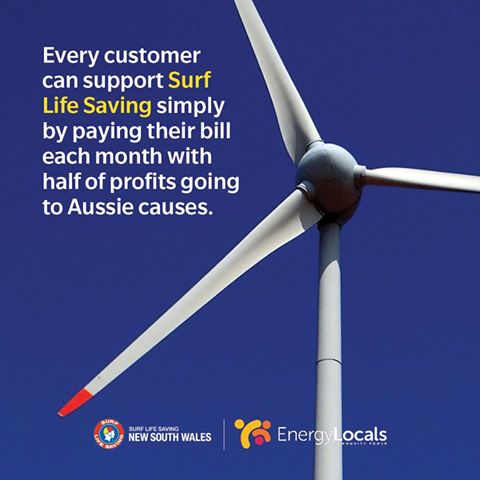

If Victoria Can Ban CSG, NSW Can Too!
By The Wilderness SocietyCoal seam gas (CSG) threatens our water, our health and our climate. Many jurisdictions around the world are permanently banning this dangerous industry, most recently Victoria. We do not need or want risky coal seam gas in NSW. It’s clear that the industry has no social licence in our state, yet vast and critical areas—as well as human health—are still under threat from CSG across the state.
Call on the new Premier Berejiklian and the new Planning Minister Roberts to follow Victoria's lead and ban this harmful and risky industry in NSW.
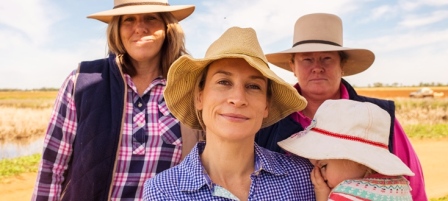

Myna Action Group
Pittwater Natural Heritage Association (PNHA)
Indian Mynas - what a pest - like flying rats. Contact us on pnhainfo@gmail.com for more information and have a look athttps://www.facebook.com/MynaProblems/
Indian Mynas are displacing our native birds. They often nest in and around shops where their food source is. I took this one down this morning in Avalon (no chicks or eggs but I disturbed the female). There were literally hundreds of tiny bits of plastic in the nest which makes you think that all this plastic would be swilling down the stormwater drains into the sea.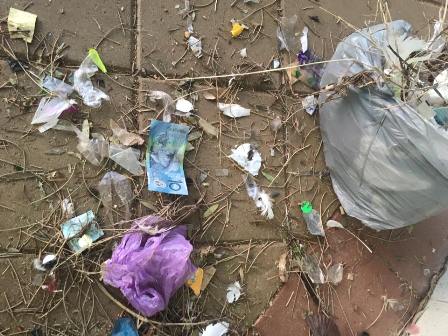
Wildlife Carers and Organisations in Pittwater:
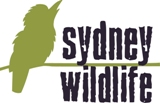 Sydney Wildlife rescues, rehabilitates and releases sick, injured and orphaned native wildlife. From penguins, to possums and parrots, native wildlife of all descriptions passes through the caring hands of Sydney Wildlife rescuers and carers on a daily basis. We provide a genuine 24 hour, 7 day per week emergency advice, rescue and care service.
Sydney Wildlife rescues, rehabilitates and releases sick, injured and orphaned native wildlife. From penguins, to possums and parrots, native wildlife of all descriptions passes through the caring hands of Sydney Wildlife rescuers and carers on a daily basis. We provide a genuine 24 hour, 7 day per week emergency advice, rescue and care service.
As well as caring for sick, injured and orphaned native wildlife, Sydney Wildlife is also involved in educating the community about native wildlife and its habitat. We provide educational talks to a wide range of groups and audiences including kindergartens, scouts, guides, a wide range of special interest groups and retirement villages. Talks are tailored to meet the needs and requirements of each group.
Found an injured native animal? We're here to help.
Keep the animal contained, warm, quiet and undisturbed. Do not offer any food or water. Call Sydney Wildlife immediately on 9413 4300, or take the animal to your nearest vet. Generally there is no charge. Find out more at: www.sydneywildlife.org.au
 Southern Cross Wildlife Care was launched over 6 years ago. It is the brainchild of Dr Howard Ralph, the founder and chief veterinarian. SCWC was established solely for the purpose of treating injured, sick and orphaned wildlife. No wild creature in need that passes through our doors is ever rejected.
Southern Cross Wildlife Care was launched over 6 years ago. It is the brainchild of Dr Howard Ralph, the founder and chief veterinarian. SCWC was established solely for the purpose of treating injured, sick and orphaned wildlife. No wild creature in need that passes through our doors is ever rejected.
People can assist SCWC by volunteering their skills ie: veterinary; medical; experienced wildlife carers; fundraising; "IT" skills; media; admin; website etc. We are always having to address the issue of finances as we are a non commercial veterinary service for wildlife in need, who obviously don't have cheque books in their pouches. It is a constant concern and struggle of ours when we are pre-occupied with the care and treatment of the escalating amount of wildlife that we have to deal with. Just becoming a member of SCWC for $45 a year would be a great help. Regular monthly donations however small, would be a wonderful gift and we could plan ahead knowing that we had x amount of funds that we could count on. Our small team of volunteers are all unpaid even our amazing vet Howard, so all funds raised go directly towards our precious wildlife. SCWC is TAX DEDUCTIBLE.
Find out more at: southerncrosswildlifecare.org.au/wp/
Think before you print ; A kilo of recycled paper creates around 1.8 kilograms of carbon emissions, without taking into account the emissions produced from transporting the paper. So, before you send a document to print, think about how many kilograms of carbon emissions you could save by reading it on screen.
Australian Native Foods website: http://www.anfil.org.au/

What Does PNHA do?
On-ground bush regeneration. eg: Asparagus Fern Out Days
Activities: guided walks, bird-watching
Quaterly informative newsletter, online or paper
Members email group for leaset environmental news and events
AGM with Guest Speaker
Free advice for members on managing gardens for Native Vegetation and fauna habitat
Lobbies Pittwater Council and State Government on inappropriate management practices and development
Provides support to Council for PNHA-approved grant applications for environmental projects
Publications: Introductory Field Guide to Birds of Warriewood Wetlands & Irrawong Reserve, $20.00rrp, attractive cards with photos of Pittwater scenes, flora and fauna $2.00
Email: pnhainfo@gmail.com Or click on Logo to visit website.
Create a Habitat Stepping Stone!
Over 50 Pittwater households have already pledged to make a difference for our local wildlife, and you can too! Create a habitat stepping stone to help our wildlife out. It’s easy - just add a few beautiful habitat elements to your backyard or balcony to create a valuable wildlife-friendly stopover.
How it works
1) Discover: Visit the website below to find dozens of beautiful plants, nest boxes and water elements you can add to your backyard or balcony to help our local wildlife.
2) Pledge: Select three or more elements to add to your place. You can even show you care by choosing to have a bird appear on our online map.
3) Share: Join the Habitat Stepping Stones Facebook community to find out what’s happening in the natural world, and share your pics, tips and stories.
What you get
• Enjoy the wonders of nature, right outside your window. • Free and discounted plants for your garden. • A Habitat Stepping Stone plaque for your front fence. • Local wildlife news and tips. • Become part of the Pittwater Habitat Stepping Stones community.
Get the kids involved and excited about helping out!www.HabitatSteppingStones.org.au
No computer? No problem -Just write to the address below and we’ll mail you everything you need. Habitat Stepping Stones, Department of Environmental Sciences, Macquarie University NSW 2109. This project is assisted by the NSW Government through its Environmental Trust

Wildlife Carers and Organisations in Pittwater:
 Sydney Wildlife rescues, rehabilitates and releases sick, injured and orphaned native wildlife. From penguins, to possums and parrots, native wildlife of all descriptions passes through the caring hands of Sydney Wildlife rescuers and carers on a daily basis. We provide a genuine 24 hour, 7 day per week emergency advice, rescue and care service.
Sydney Wildlife rescues, rehabilitates and releases sick, injured and orphaned native wildlife. From penguins, to possums and parrots, native wildlife of all descriptions passes through the caring hands of Sydney Wildlife rescuers and carers on a daily basis. We provide a genuine 24 hour, 7 day per week emergency advice, rescue and care service.
As well as caring for sick, injured and orphaned native wildlife, Sydney Wildlife is also involved in educating the community about native wildlife and its habitat. We provide educational talks to a wide range of groups and audiences including kindergartens, scouts, guides, a wide range of special interest groups and retirement villages. Talks are tailored to meet the needs and requirements of each group.
Found an injured native animal? We're here to help.
Keep the animal contained, warm, quiet and undisturbed. Do not offer any food or water. Call Sydney Wildlife immediately on 9413 4300, or take the animal to your nearest vet. Generally there is no charge. Find out more at: www.sydneywildlife.org.au
 Southern Cross Wildlife Care was launched over 6 years ago. It is the brainchild of Dr Howard Ralph, the founder and chief veterinarian. SCWC was established solely for the purpose of treating injured, sick and orphaned wildlife. No wild creature in need that passes through our doors is ever rejected.
Southern Cross Wildlife Care was launched over 6 years ago. It is the brainchild of Dr Howard Ralph, the founder and chief veterinarian. SCWC was established solely for the purpose of treating injured, sick and orphaned wildlife. No wild creature in need that passes through our doors is ever rejected.
People can assist SCWC by volunteering their skills ie: veterinary; medical; experienced wildlife carers; fundraising; "IT" skills; media; admin; website etc. We are always having to address the issue of finances as we are a non commercial veterinary service for wildlife in need, who obviously don't have cheque books in their pouches. It is a constant concern and struggle of ours when we are pre-occupied with the care and treatment of the escalating amount of wildlife that we have to deal with. Just becoming a member of SCWC for $45 a year would be a great help. Regular monthly donations however small, would be a wonderful gift and we could plan ahead knowing that we had x amount of funds that we could count on. Our small team of volunteers are all unpaid even our amazing vet Howard, so all funds raised go directly towards our precious wildlife. SCWC is TAX DEDUCTIBLE.
Find out more at: southerncrosswildlifecare.org.au/wp/
Think before you print ; A kilo of recycled paper creates around 1.8 kilograms of carbon emissions, without taking into account the emissions produced from transporting the paper. So, before you send a document to print, think about how many kilograms of carbon emissions you could save by reading it on screen.
Australian Native Foods website: http://www.anfil.org.au/

What Does PNHA do?
On-ground bush regeneration. eg: Asparagus Fern Out Days
Activities: guided walks, bird-watching
Quaterly informative newsletter, online or paper
Members email group for leaset environmental news and events
AGM with Guest Speaker
Free advice for members on managing gardens for Native Vegetation and fauna habitat
Lobbies Pittwater Council and State Government on inappropriate management practices and development
Provides support to Council for PNHA-approved grant applications for environmental projects
Publications: Introductory Field Guide to Birds of Warriewood Wetlands & Irrawong Reserve, $20.00rrp, attractive cards with photos of Pittwater scenes, flora and fauna $2.00
Email: pnhainfo@gmail.com Or click on Logo to visit website.
Create a Habitat Stepping Stone!
Over 50 Pittwater households have already pledged to make a difference for our local wildlife, and you can too! Create a habitat stepping stone to help our wildlife out. It’s easy - just add a few beautiful habitat elements to your backyard or balcony to create a valuable wildlife-friendly stopover.
How it works
1) Discover: Visit the website below to find dozens of beautiful plants, nest boxes and water elements you can add to your backyard or balcony to help our local wildlife.
2) Pledge: Select three or more elements to add to your place. You can even show you care by choosing to have a bird appear on our online map.
3) Share: Join the Habitat Stepping Stones Facebook community to find out what’s happening in the natural world, and share your pics, tips and stories.
What you get
• Enjoy the wonders of nature, right outside your window. • Free and discounted plants for your garden. • A Habitat Stepping Stone plaque for your front fence. • Local wildlife news and tips. • Become part of the Pittwater Habitat Stepping Stones community.
Get the kids involved and excited about helping out!www.HabitatSteppingStones.org.au
No computer? No problem -Just write to the address below and we’ll mail you everything you need. Habitat Stepping Stones, Department of Environmental Sciences, Macquarie University NSW 2109. This project is assisted by the NSW Government through its Environmental Trust
Increase In Premature Deaths In Australian Nursing Homes
North Coast Shark Net Trial To End Early
Aussie Rock Legend Joins Celebrations Of Smoking Ban
Lingering Risk Of Suicide After Discharge From Psychiatric Facilities
Providing $47 Million For Suicide Prevention Work Across Australia
Express Trains To The Blue Mountains
- twenty-four new express services between Sydney and the Blue Mountains on weekends
- dedicated eight car express tourist trains with around 20-minute cuts to return travel times
- an additional 25,000 additional seats every week
- an extra 18,000 seats on weekends
- a new weekday Sydney – Lithgow express service.
- doubling capacity on six current weekend Blue Mountains services from four to eight carriages
- providing more than 4000 additional seats on weekends.
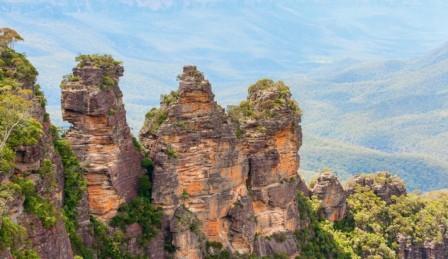
$1.2m Boost To Save Food And Energy
- Secondbite with $86,416 for its Environmental Improvements Program to enlarge its freezer storage capacity of rescued food and to add a refrigerated vehicle to its operation to increase the supply of rescued food.
- FareShare with $154,641 for its Powering Three Million Cooked Meals for Australian Charities program by installing solar systems to reduce energy costs and to add a refrigerated van to its operation to increase supply of rescued food.
- Oz Harvest Limited with $272,233 to for its Oz Harvest Food Rescue Program national vehicle fleet and food storage refrigeration systems project to expand its fleet of refrigerated vehicles and refrigeration systems to increase food rescue and supply through its programs in Victoria, New South Wales, Australian Capital Territory and Queensland.
- Foodbank Australia Limited with $272,727 to install solar systems to reduce energy costs at its distribution centres in Queensland, New South Wales, Victoria, South Australia and Western Australia.
New Website For Business Events Australia
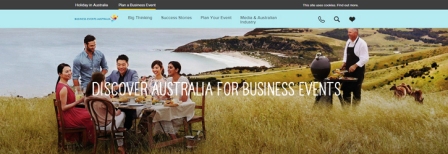
Travel Ban For Child Sex Offenders
Overhead Signs On Freeways: Are Drivers Being Told Too Much?
Australian Industrial Chemicals Reform
Disclaimer: These articles are not intended to provide medical advice, diagnosis or treatment. Views expressed here do not necessarily reflect those of Pittwater Online News or its staff.